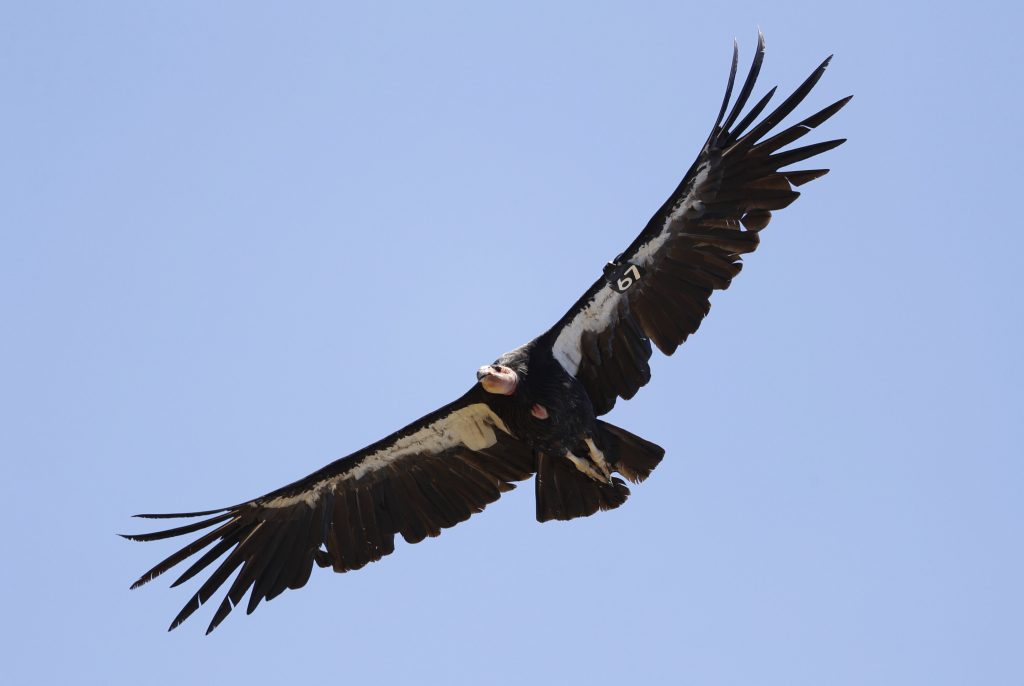In this June 21, 2017, file photo, a California condor takes flight in the Ventana Wilderness east of Big Sur, Calif. Three California condors have died from avian flu in northern Arizona and authorities are trying to determine what killed five others in the flock. The National Park Service on Friday, April 7, 2023 said the birds that died last month tested positive for Highly Pathogenic Avian Influenza. Credit: AP Photo/Marcio Jose Sanchez, File
Three California condors have died from avian flu in northern Arizona and authorities are trying to determine what killed five others in the flock, the National Park Service announced Friday.
A sick female condor suspected of having lead poisoning was found dead on March 20 and testing showed it had Highly Pathogenic Avian Influenza (HPAI), the park service said.
Two other birds later found dead also tested positive, while test results aren’t yet completed for five others, the park service said.
The birds are part of a population that moves throughout northern Arizona and southern Utah, including Grand Canyon National Park, the park service said.
The Peregrine Fund, which manages the Arizona-Utah flock, also captured five other birds that seemed ill and sent them to a wildlife rescue in Phoenix. One bird died and the other four have been quarantined, officials said.
Exposure to the virus is expected to rise during the condors’ northward spring migration.
HPAI hasn’t been detected in other populations in California or Mexico’s Baja California, according to the park service.
Avian flu occurs mainly in birds including domestic chickens, but it has been found in other animals, wild and domestic, in all U.S. states except Hawaii.
Humans are considered to be at low risk from HPAI, although there have been reported infections.
The California condor is one of the world’s largest birds with a wingspan of up to 10 feet (3 meters). The birds once patrolled the sky from Mexico to British Columbia. Condors can live for 60 years and fly vast distances, which is why their range can extend into several states.
The population plummeted to the brink of extinction in the 1970s because of hunting, habitat destruction and lead poisoning from animals eating shot with lead bullets.
In the 1980s, wildlife officials captured the last remaining 22 condors and took them to the San Diego and Los Angeles zoos to be protected and bred in captivity. The birds were then released into sanctuaries and national parks where they can be monitored.
The birds have been protected as an endangered species by federal law since 1967 and by California state law since 1971.
California condors have been making a comeback in the wild and now occupy parts of California’s Central Coast, Arizona, Utah and Baja California, Mexico. The total wild population now numbers more than 300 birds.
© 2023 The Associated Press. All rights reserved. This material may not be published, broadcast, rewritten or redistributed without permission.
Citation: Avian flu kills 3 California condors in northern Arizona (2023, April 8) retrieved 17 April 2023 from https://phys.org/news/2023-04-avian-flu-california-condors-northern.html
This document is subject to copyright. Apart from any fair dealing for the purpose of private study or research, no part may be reproduced without the written permission. The content is provided for information purposes only.

